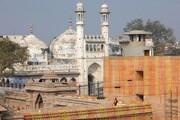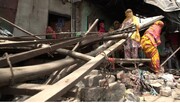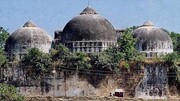Hawzah News Agency – There is a hue and cry in India that the Muslim population in India may outnumber the current Hindu majority before long. The fanatic Hindus point out that Islam, unlike the Hinduism, allows polygamy. As such, a Muslim household is likely to have more siblings than a Hindu. The BJP wants to enforce a uniform Civil Code that outlaws polygamy.
Not all the projections about the phenomenal growth of the Muslim population may be correct. Above all, the Muslim population in India has always been under-represented in the Lok Sabha. Pew Research Center estimated that there were 195 million Muslims in 2015. By 2060, Pew estimates, there will be more Muslims in India than anywhere else in the world (outnumbering even Indonesia), and they will constitute 19% of Indians.
Riaz Hassan’s study
Riaz Hassan, in his study Indian Muslim: Sociology of a religious Minority infers:
The largest and most consequential change [in population] however will be in India. Its Hindu population will increase by 35 percent from 1.03 billion in 2010 to 1.38 billion in 2050, but Indian Muslim population will increase by 76 cent from 176million to 310 million in the same period. This means that the largest increase in the Muslim population of South Asia will occur in India.
India will acquire a new global status in terms of the religious composition of its population. Not only will it be the largest Hindu nation but also with a population of 310 Muslims, India will become the largest Muslim nation in the world. While Hindus will remain the majority population at 77 percent, the proportion of Muslims will increase from 14 percent of the population in 2011 to 18 percent in 2050. This means that nearly one out of every five Indians will be a Muslim (p. 2., ibid.)
Disadvantageous dispersal of Indian Muslim population
Unlike the Christians who have their chief minister in Christian majority Indian state, The Indian Muslims have no chief minister. Even the Indian held Kashmir state has been illegally converted into a centrally controlled Union territory.
Indian Muslims live in all parts of the country, but more than half of them live in Uttar Pradesh, Bihar, Assam, west Bengal, and Kashmir. As per Census of India 2011, States with sizable Muslim population are : Lakshadweep (64,473, 99%), Indian occupies Kashmir (12, 541, 302, 68%), Assam (31,205,576, 34%), West Bengal (91,279, 27%), Kerala (33, 404,061, 27%), Uttar Pradesh (199,812,341, 19%), , Bihar (104, 099, 542, 17%), Jharkhand (32,988,134, 15%), Uttaranchal (10,086,292,14%), Karnataka 961,095, 297, 13%).Delhi (16,787,941, 13%), Maharashtra (132,374,333, 12%), Gujarat (64,739692, 10%), Rajasthan (68,548,437, 9%).
Legislative voice in the wilderness
Most of the winning candidates are from opposition parties while only one candidate of the Bharatiya Janata Party (BJP) won 303 out of 542 seats across the country. But, only one Muslim candidate (a turncoat) could make it to the Lower House (lok Sabha, house of the people).
Muslims have always been underrepresented in the lok sabha. In the 1980 election, almost 10% of those elected were Muslim. In 2014, it was less than 4%.
As the result of poor representation in the lok Sabha, critical questions about the plight of the Muslim in India are never asked. Most questions about Islam are usually asked by the Hindu legislators. These questions revolve around rituals like hajj. A set of 276,000 questions were asked in parliament from 1999 to 2017. Few questions are asked about plight of the Indian Muslim women, for instance harassment of hijab-wearing women at public places. The number of Muslim women is less than 1per cent of lok Sabha.
Trend
The majoritarian policies of the BJP are likely to further reduce Muslim representation. Many Hindu nationalists express the idea that Muslims can never be truly Indians because, unlike Hindus, their holy sites are not in India. The BJP’s growth was catalyzed by the demolition of the Babri Masjid in 1992. In the 2002 riots, over 1,000 people, most of whom were Muslims, were killed in the state of Gujarat (Modi was then the state’s chief minister).
The Muslim’s dilemma
During the freedom movement, the Indian Muslim was the avant-garde of the All-India Muslim League. With creation of Pakistan, they lost their charismatic leader, Quaid-e-Azam. The Indian Muslim felt orphaned and leaderless in a Hindu majoritarian state. They had to suffer the travails of living under a cosmetically-secular constitution unable to protect their minority rights.
Historically, Jamiyat Ulema-e-Hind, associated with Deoband seminary, remained affiliated with the Congress. The Jamiyat’s sole preoccupation was religious endowments. Key issues like Organisation of Islamic Countries, Kashmir and Palestine issues remained out of their focus. Similarly, Jamaat-e-Islamai was no longer in a position in the post-Partition India to argue that secularism and democracy are alien to Islam. And the Muslim should strive for an Islamic state. In the post-Partition India, the prominent Muslim parties, Muslim League and Ittehadul Muslimeen were able to send representatives to the parliament. But, the ML is confined to northern districts of Kerala and the latter retained its political base in Andhra Pradesh, generally Hyderabad. The Indian Muslim who during Pakistan movement fought for a separate homeland is still under burden to prove that they are loyal to India and hence, worthy of Indian citizenship.
Physical insecurity
Indian Constitution and successive governments failed to ensure physical security to the Muslim minority (as also other minorities). Since Partition, over 40,000 Muslim have been killed or injured in anti-Muslim riots. In recent Delhi riots, Muslim houses and shops were bulldozed despite a Supreme Court stay order. The hapless Muslim was later compelled to participate in a joint Hindu-Muslim Taranga (Indian flag) march to show it was all hunky-dory with the law-and-order situation.
The Sachar Committee
This seven-member High Level Committee established in March 2005 by then Prime Minister Manmohan Singh, highlighted the social marginalisation of the downtrodden Muslims. The committee was headed by former Chief Justice of Delhi High Court Rajinder Sachar to study the social, economic and educational condition of Muslims in India. The Committee, inter alia, recommended setting up an Equal Opportunity Commission to provide a legal mechanism to address discrimination complaints, including in matters such as housing and employment.
The Committee observed:
“Their [Muslims’] conditions are only slightly better than those of Hindu Scheduled Castes/scheduled Tribes and worse than those of Hindus belonging to other backward castes [read mandal Report also]”.
Sachar Committee found that their identity marks such as address and names often lead to suspicion and discrimination by people and institutions. Discriminations are persuasive in employment housing and schooling. Muslim women who wear religious head and face covering can experience particularly acute discrimination. At the same time, most of the fellow non-Muslims fellow citizens regard the socio-cultural characteristics of the Muslim community as the cause of its “backwardness”.
Concluding reflections
The socio-economic condition of the Indian Muslim, like that of the dalit (the downtrodden untouchables) has worsened over the years. The golden words of the Indian Constitution about fundamental rights, justice liberty, equality and fraternity (Articles 25 to 30 in Part III of the Indian Constitution) remain unfulfilled.
The Muslim community should coalesce with other persecuted communities to forge an oppressed-people-of-India movement.






Your Comment